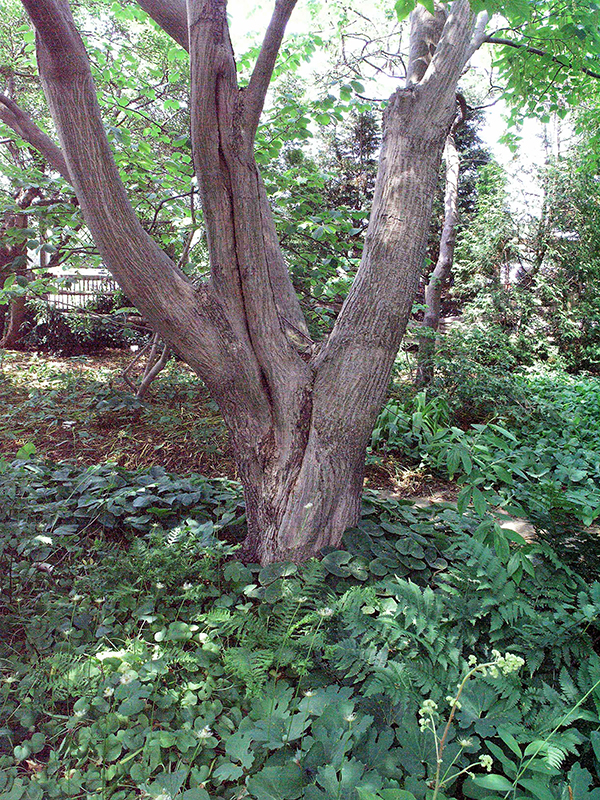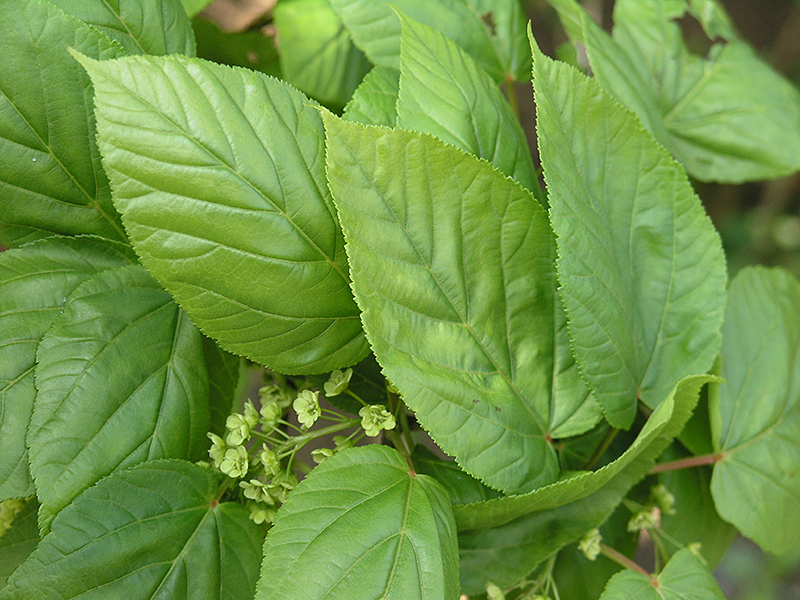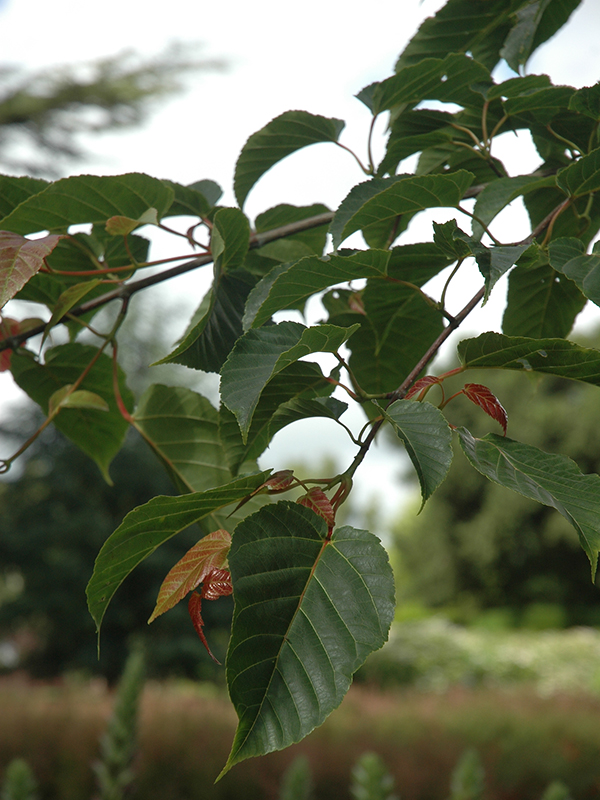| General Description | A medium sized tree that is seldom planted. Interesting bark, leaves and blooms. This species has been placed on the IUCN Red List as least concern. |
| ID Characteristic | The characteristic snakeing or lines on the bark, often a milky grey in colour. |
| Shape | Rounded crown. |
| Landscape | Attractive small tree or large shrub for a landscape. |
| Cultivation | Medium moisture, well drained soil in full sun to partial shade. |
| Pests | Few pest or disease issues, although bark splitting has been a minor problem and is in evidence on the specimen at the Niagara Parks Botanical Gardens. |
| Notable Specimens | The Niagara Parks Botanical Gardens, natural garden near the residence, Niagara Falls, Ontario, Canada. |
| Habitat | Mountainous areas, mixed forests and along stream sides. |
| Bark/Stem Description | Greyish-brown bark with greenish-purple glabrous branchlets. |
| Flower/Leaf Bud Description | Small, oblong with 2 pairs of scales. |
| Leaf Description | Ovate, ovate-oblong or suborbicular-ovate, thin, 3-5 lobes, 10-13 pairs of veins and a subcordate or rounded base, 12-14x4-9 cm. |
| Flower Description | Greenish-yellow 5-petaled flowers with 5 sepals and 8 stamens. |
| Fruit Description | Brownish-yellow fruit, flat winged nutlets, 2.5-2.8 cm, produced in September. |


.jpg)



